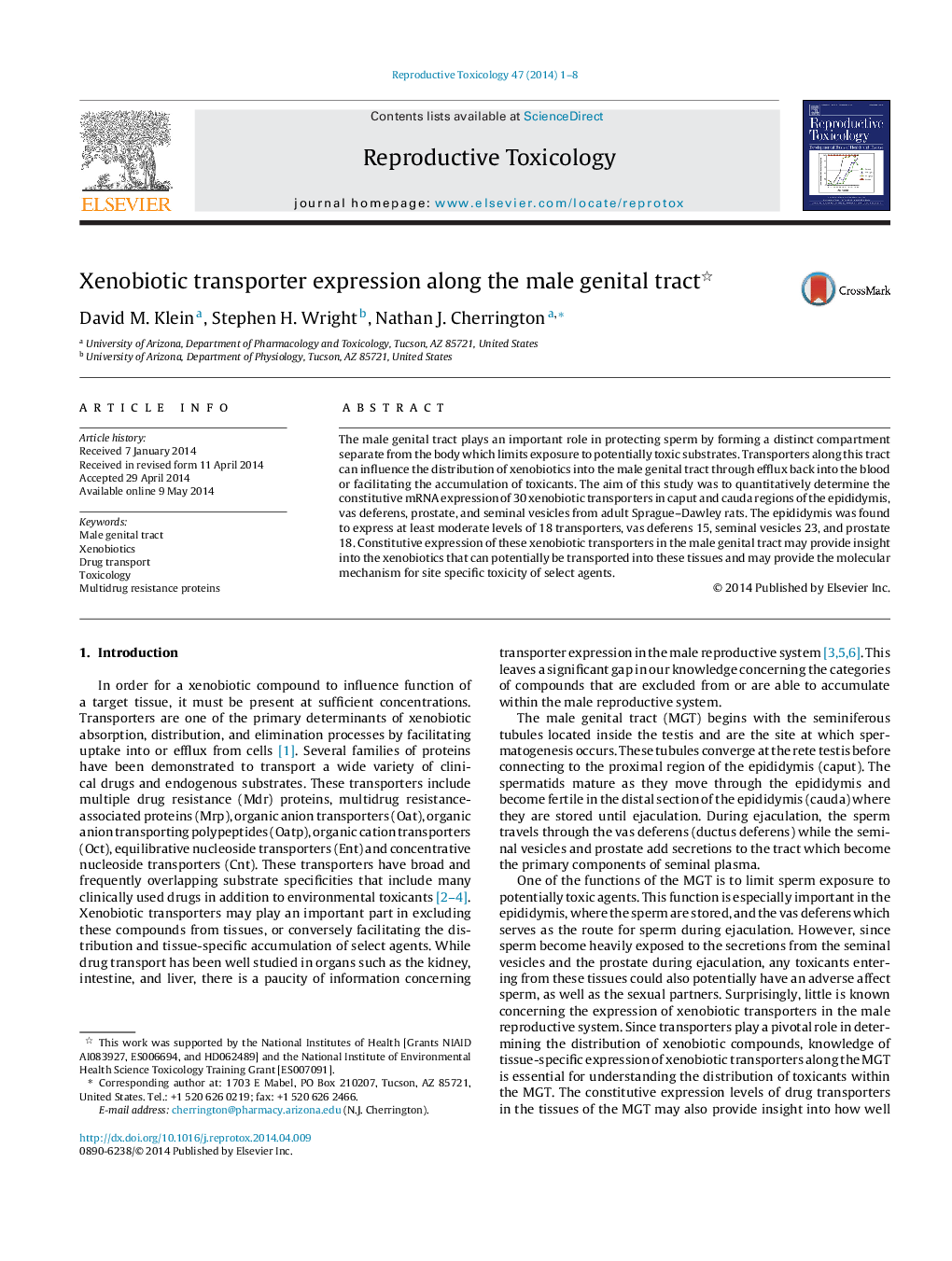| Article ID | Journal | Published Year | Pages | File Type |
|---|---|---|---|---|
| 2593516 | Reproductive Toxicology | 2014 | 8 Pages |
•Organs of the MGT express a complex pattern of xenobiotic transporter expression.•Seminal vesicles express the most xenobiotic transporters, vas deferens the least.•Many of these transporters are known to affect the disposition of toxicants.•These data lays the foundation for future work to determine induction effects.
The male genital tract plays an important role in protecting sperm by forming a distinct compartment separate from the body which limits exposure to potentially toxic substrates. Transporters along this tract can influence the distribution of xenobiotics into the male genital tract through efflux back into the blood or facilitating the accumulation of toxicants. The aim of this study was to quantitatively determine the constitutive mRNA expression of 30 xenobiotic transporters in caput and cauda regions of the epididymis, vas deferens, prostate, and seminal vesicles from adult Sprague–Dawley rats. The epididymis was found to express at least moderate levels of 18 transporters, vas deferens 15, seminal vesicles 23, and prostate 18. Constitutive expression of these xenobiotic transporters in the male genital tract may provide insight into the xenobiotics that can potentially be transported into these tissues and may provide the molecular mechanism for site specific toxicity of select agents.
